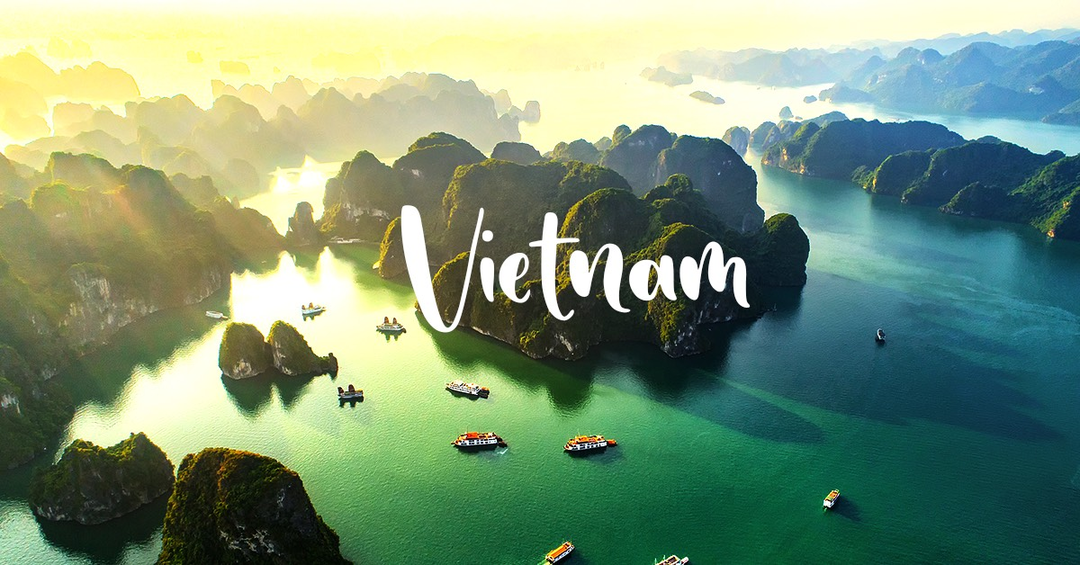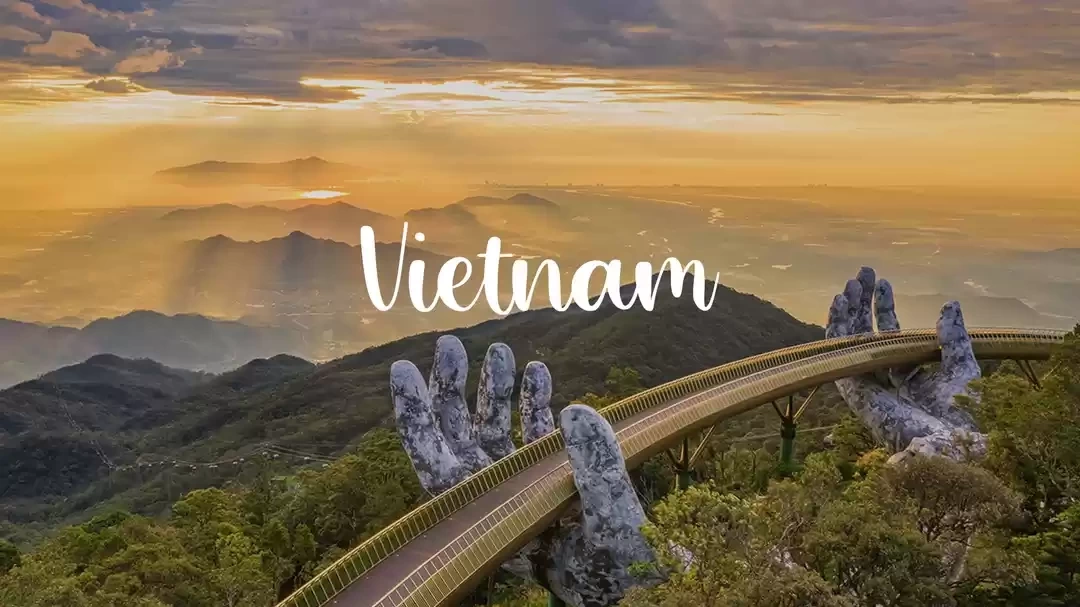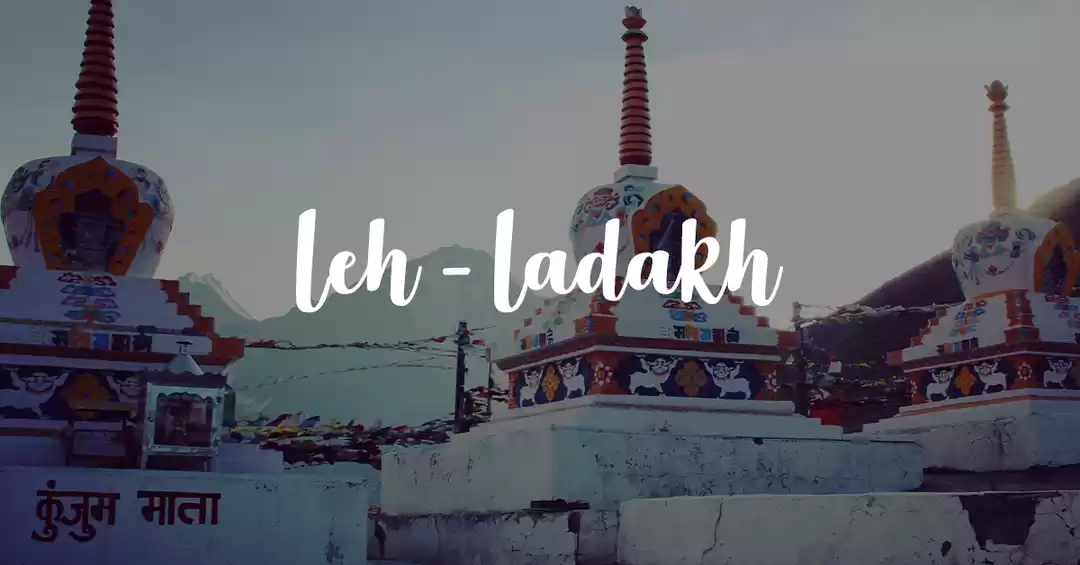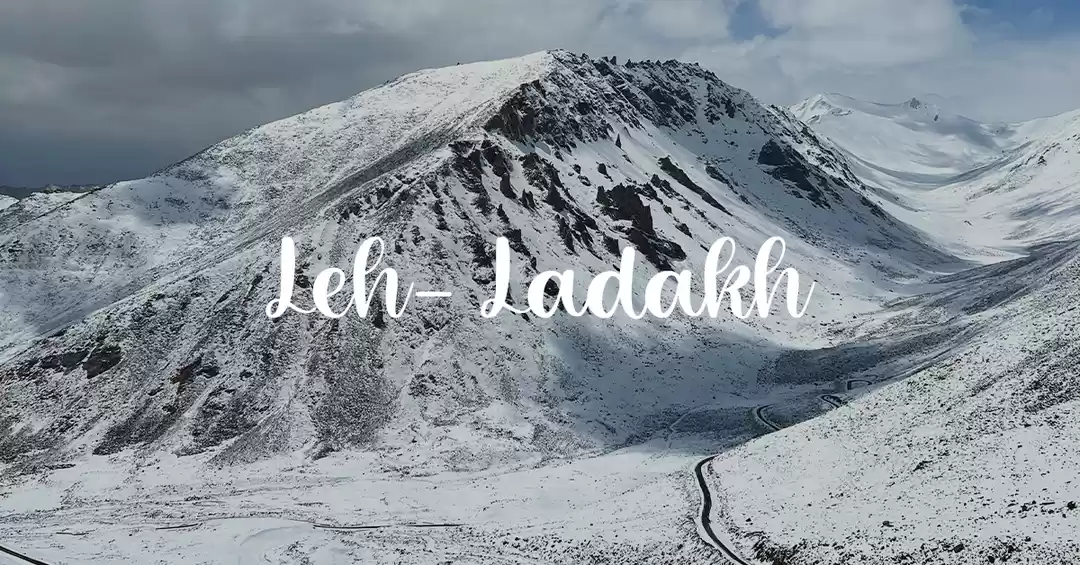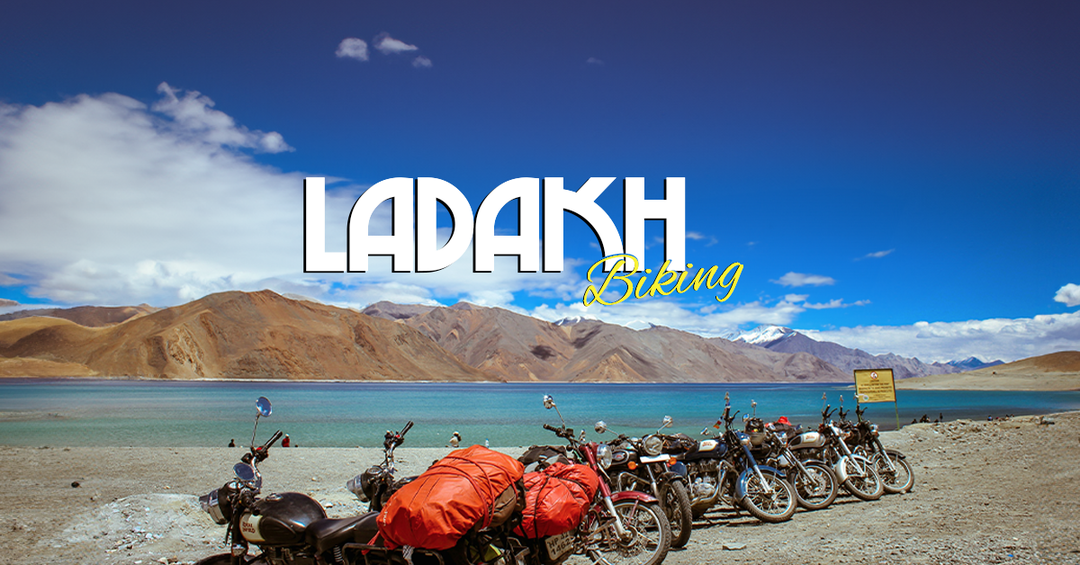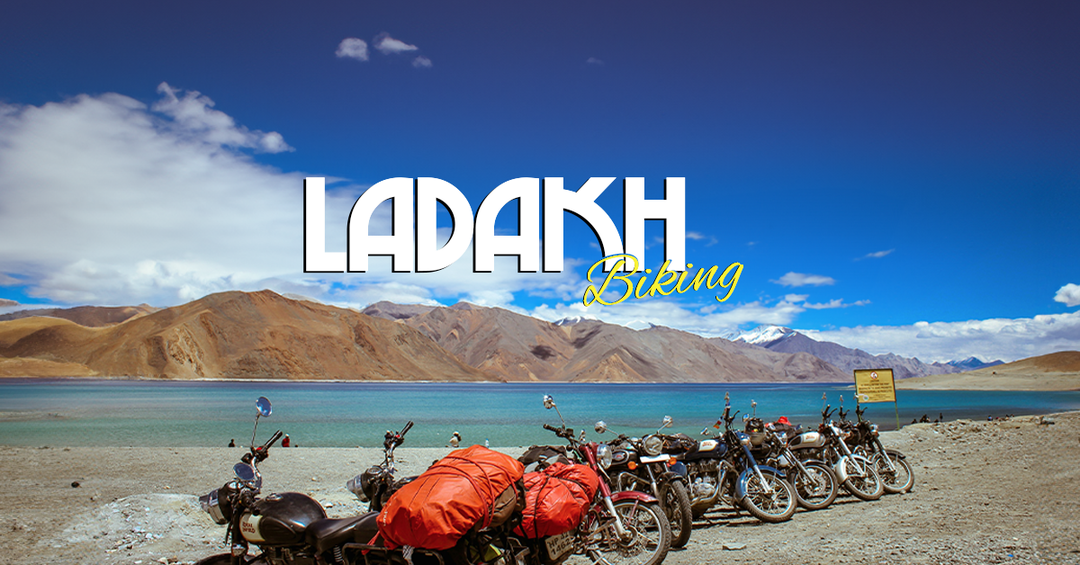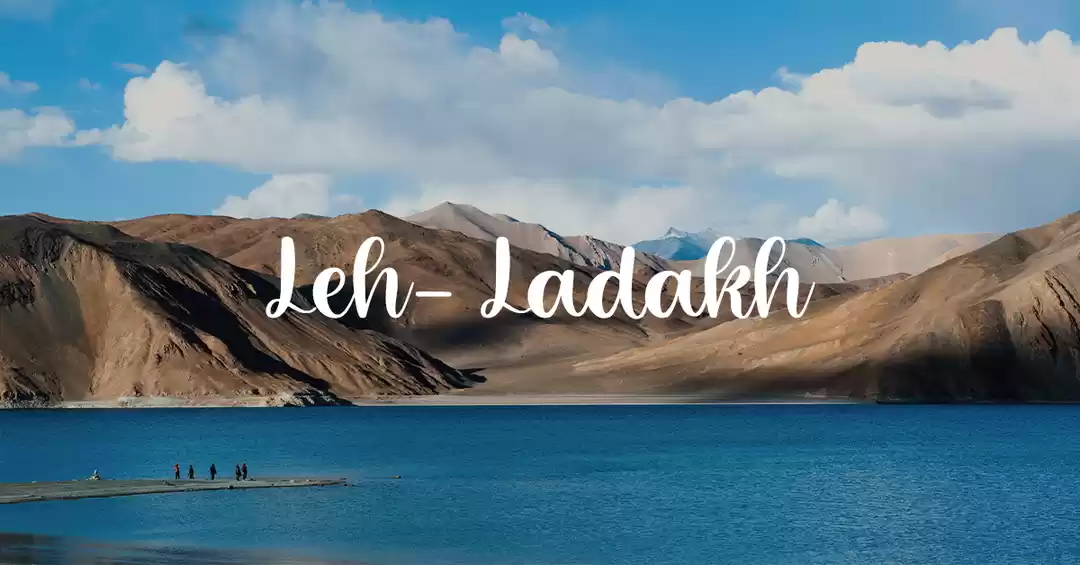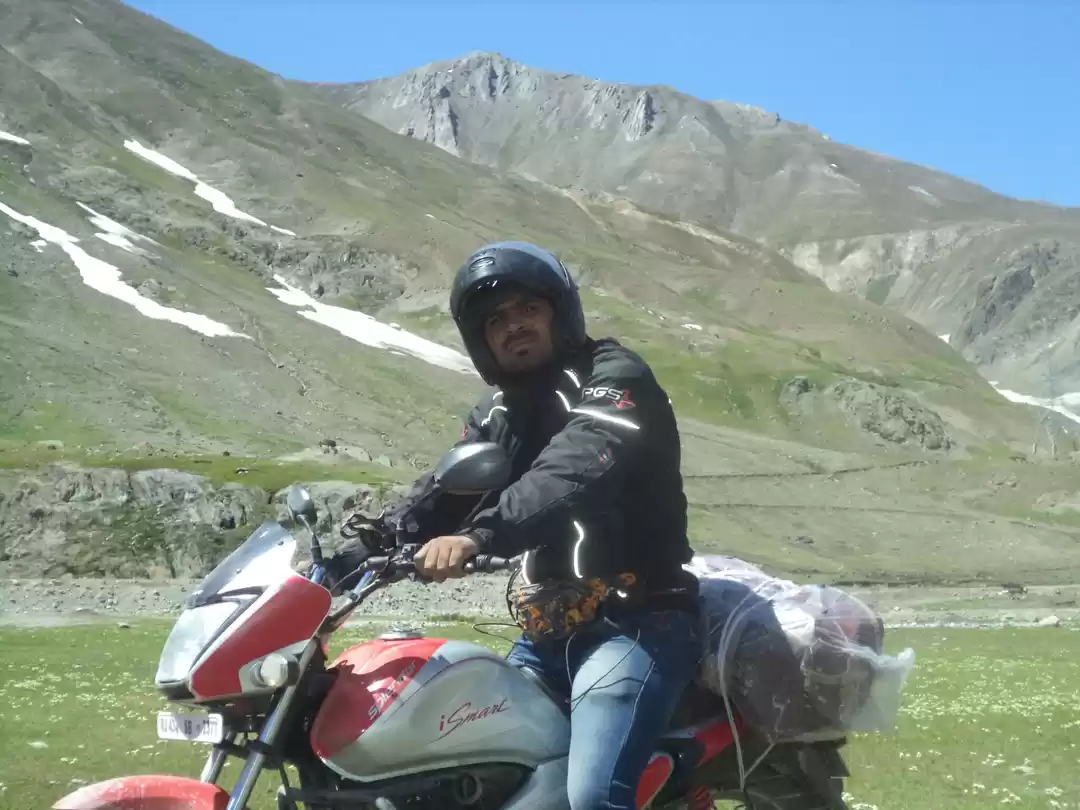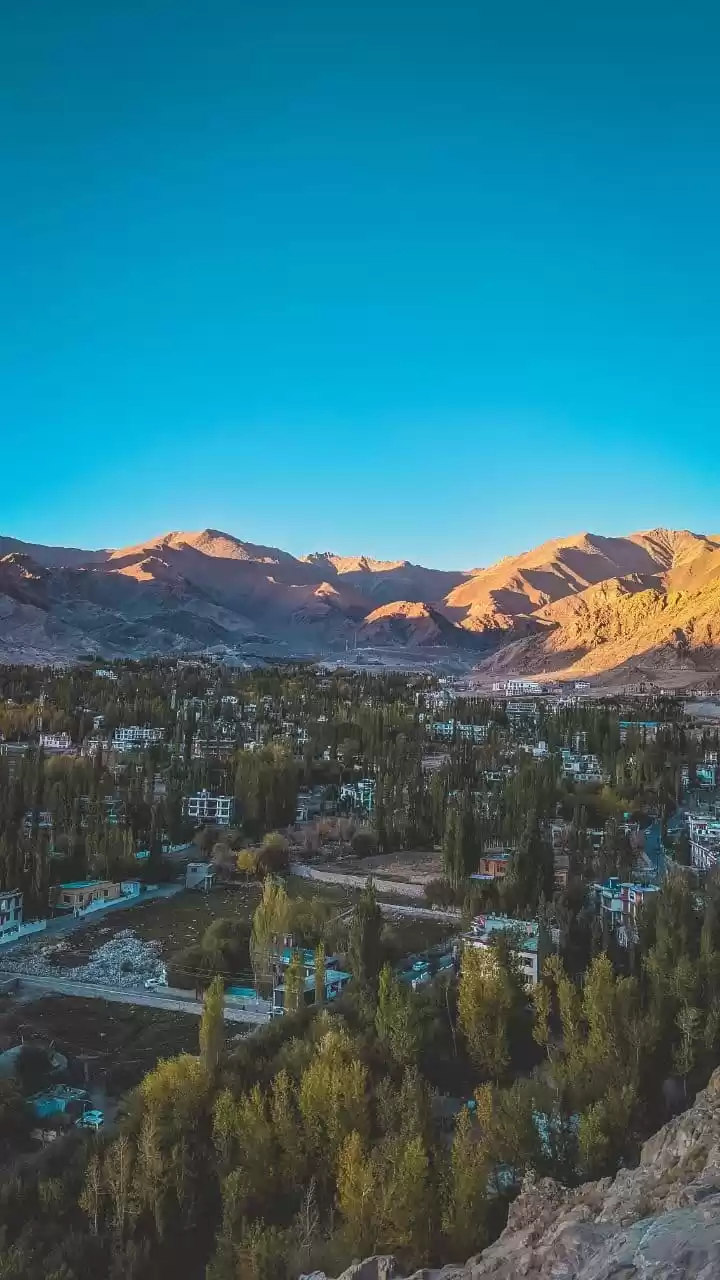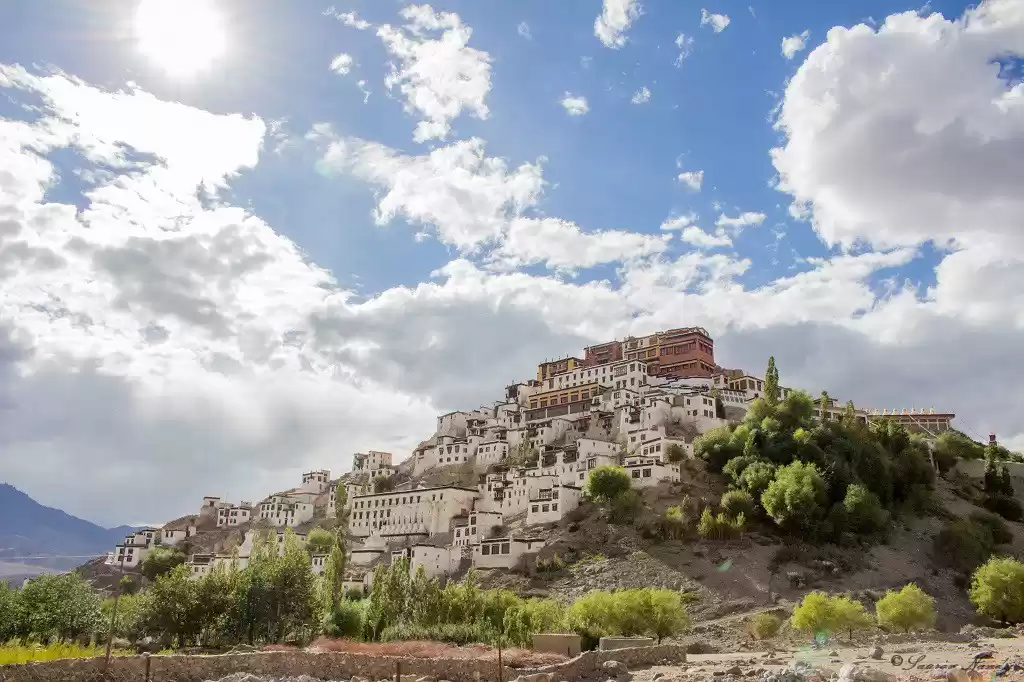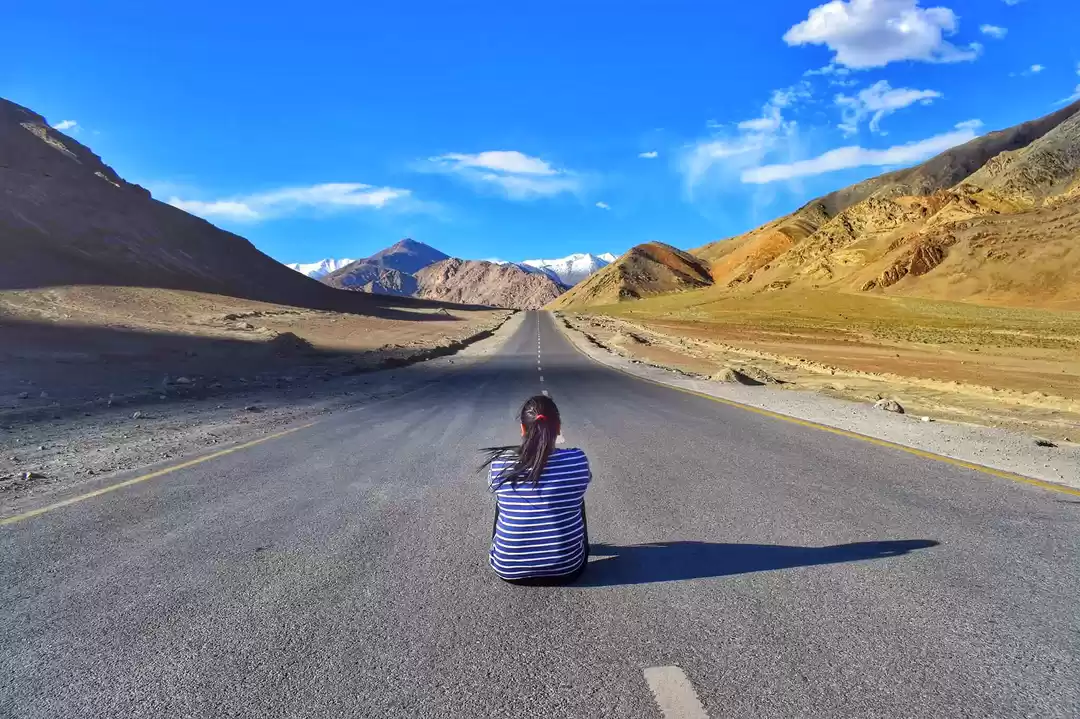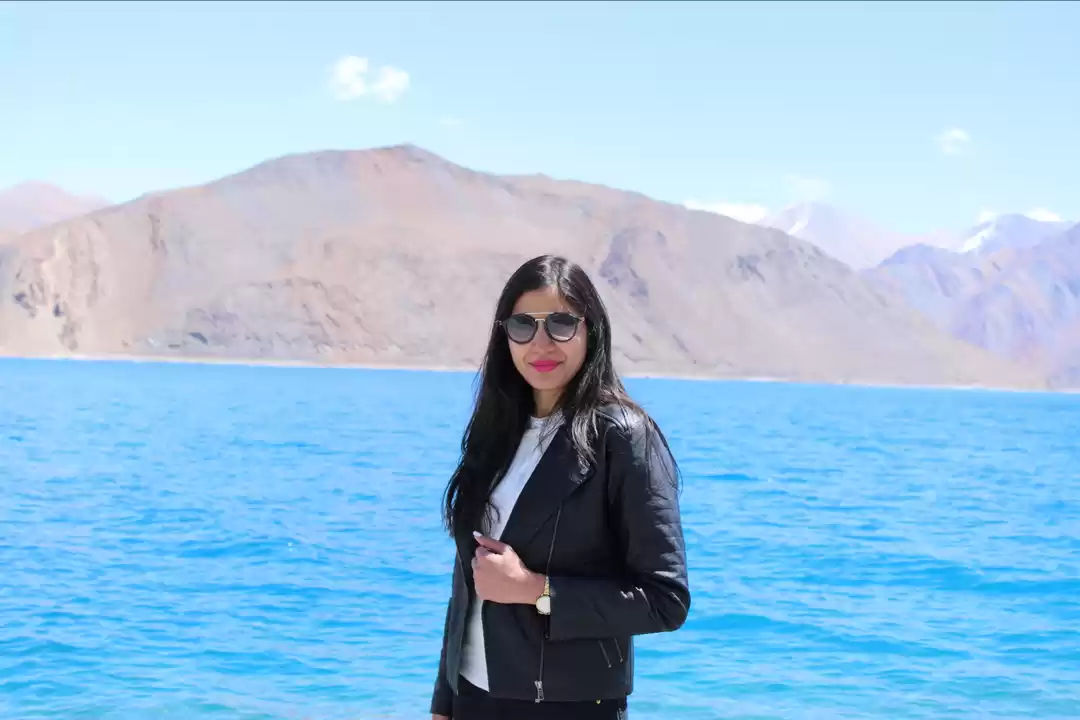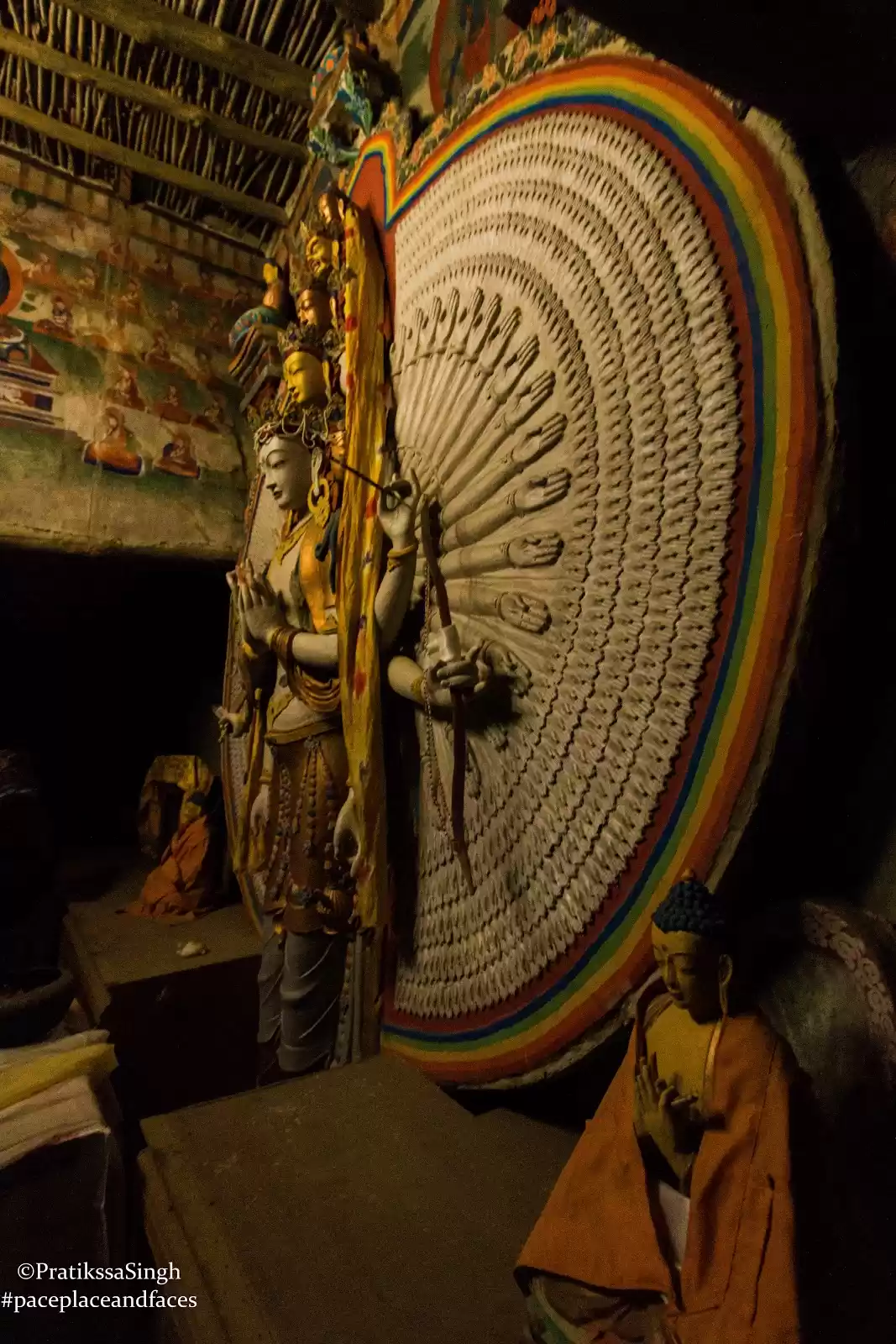
In early June, we embarked on a journey to Kashmir to immerse ourselves in its awe-inspiring natural beauty, vibrant culture, and one-of-a-kind experiences. Our travel group consisted of eight individuals hailing from various parts of India, with our journey commencing from Kolkata (3 people), Hyderabad (2 people), Bangalore (2 people), and Mumbai (1 people). Given my Mumbai origin, this journal chronicles my personal adventure.
On the 2nd of June, 2023, I caught an early morning Air India flight from Mumbai Terminal 2 to Delhi. It was at Delhi Airport that I rendezvoused with my five fellow travelers. From Delhi, we took a connecting flight to Srinagar, purposefully selecting this entry point to acclimatize ourselves to the local weather and high altitude.
The flight from Delhi to Srinagar was nothing short of breathtaking. The Himalayan range occasionally peeked through the clouds, engaging in an enchanting game of hide-and-seek, etching this journey into our memories.

We touched down in Srinagar around noon, secured a rented car, and proceeded to our pre-booked hotel. The streets of Srinagar were conspicuously occupied by military personnel at every turn. This initial sight in Srinagar, I must admit, was somewhat disconcerting.

After freshening up at our hotel, we set out to explore the streets of Srinagar. We stumbled upon an eatery where we enjoyed a delectable Kashmiri lunch, comprising dishes like Kashmiri Lamb Pulao and Goshtaba. Post this lip-smacking feast, we enjoyed a laid-back evening with some local cuisine and drinks. We enjoyed the evening rain that welcomed us in Srinagar, making it cooler evening and night.



The following day began with breakfast at a renowned Srinagar eatery, where we relished North Indian delicacies.


With our bellies filled with a hearty breakfast, we set off to explore some of Srinagar's prominent landmarks. These sights were conveniently clustered around Dal Lake, making it a magnetic hub of attraction for tourists. We had rented a Traveller vehicle for our entire journey.
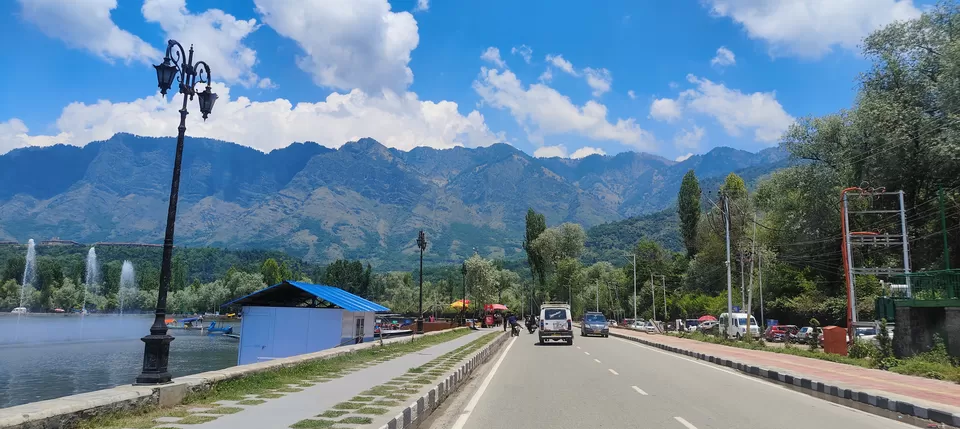
Our first stop was the illustrious Shankaracharya Temple, perched atop a hill. From this vantage point, we were treated to a panoramic view of Dal Lake. It is worth noting that the sightseeing locations in Srinagar have undergone a change from my previous visit; the vehicle would take us to a specific point, from where we would then hop into an auto that transported us to our desired destination.
To visit the temple and capture a bird's-eye view of the city, one had to ascend 300 steps. This ascent is not just a physical journey; it's a spiritual one as well. Along the way, you'll encounter local devotees and tourists making the pilgrimage, creating a sense of unity and shared spirituality. Visiting the Shankaracharya Temple, also known as the Shankaracharya Hill Temple or the Jyeshteshwara temple, in Srinagar is a profound and memorable experience. Perched atop a hill, this ancient Hindu temple offers a unique blend of spirituality, history, and breathtaking panoramic views of Srinagar and its surroundings. The Shankaracharya Temple holds immense religious significance for Hindus. It is dedicated to Lord Shiva and is believed to have been established by the revered philosopher and theologian, Adi Shankaracharya, in the 8th century. The temple exudes an aura of spiritual sanctity, making it a destination for both pilgrims and tourists seeking a deeper connection with their faith. Upon reaching the temple's summit, you are rewarded with awe-inspiring views of Srinagar, the shimmering Dal Lake, and the surrounding Himalayan mountains. The vista from the temple provides a unique perspective of the city and its natural beauty. The temple's serene ambiance, set amidst the lush greenery and silence of the hill, is a welcome contrast to the bustling city below. It serves as a reminder of the coexistence of different faiths and traditions, with its historical ties to Hinduism and its location in a predominantly Muslim region.



From Shankaracharya Temple, our next destination was Pari Mahal.
Pari Mahal, also known as the "Palace of Fairies" or "The Angels' Abode," is a historical and architectural gem. Visiting Pari Mahal is a unique experience that offers a glimpse into the rich history, culture, and stunning vistas of the region. Pari Mahal is a seven-terraced, historical monument built during the Mughal era, primarily during the reign of Dara Shikoh, the eldest son of Emperor Shah Jahan. The architecture of Pari Mahal reflects a harmonious blend of Islamic and Persian styles, featuring elegant arches, beautiful columns, and intricate stucco work. The building's unique design and serene surroundings make it a captivating sight. One of the most remarkable aspects of Pari Mahal is its location. Situated on a hillock, the structure offers panoramic views of the picturesque Dal Lake and the surrounding mountains. The lush, well-maintained gardens surrounding the complex create a tranquil atmosphere, making it an ideal place to relax and enjoy the natural beauty of Srinagar.



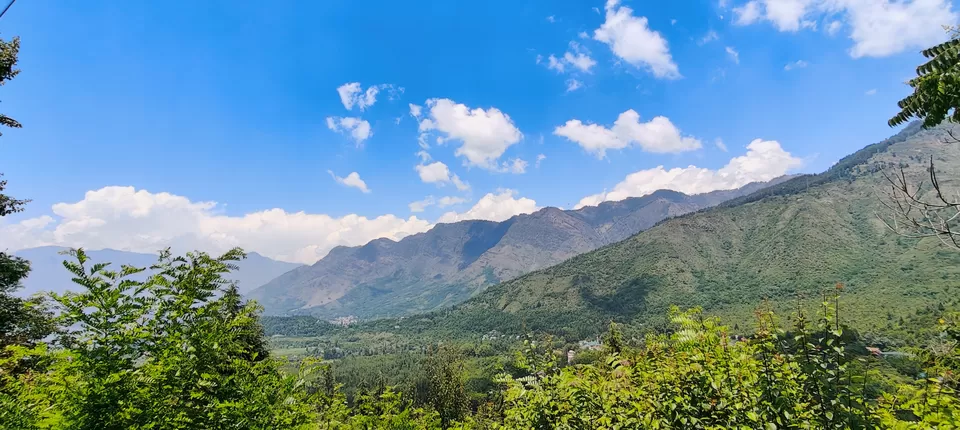
Our next destination was Nishat Bagh, also known as Nishat Garden, is a Mughal garden located on the eastern side of Dal Lake in Srinagar, Kashmir. Visiting this exquisite garden is a serene and delightful experience, offering a perfect blend of natural beauty, Mughal architecture, and a tranquil ambiance. Upon entering Nishat Bagh, you're greeted by the sight of meticulously landscaped terraced lawns, abundant flowerbeds, and a profusion of chinar trees, creating a symphony of green. The garden was not well-maintained due to the change of season. Nishat Bagh is a splendid example of Mughal garden design, featuring a series of cascading terraces that lead down to the shores of Dal Lake. The garden's layout, with its symmetrical design, flowing water channels, and meticulously trimmed hedges, reflects the refined aesthetics of the Mughal era. Nishat Garden boasts a wide variety of colorful flowers. The garden is adorned with a series of fountains, pools, and water channels that not only enhance its aesthetics but also create a soothing ambiance. The sound of water gently flowing through the garden adds to the overall tranquility. Nishat Garden was built during the reign of Emperor Jahangir in the 17th century and is a testament to the Mughal love for art, architecture, and gardens. It's a living relic of the past, offering insights into the cultural and historical heritage of the region. Near the entrance to Nishat Garden, you'll often find local artisans and vendors selling handicrafts and souvenirs. It's an excellent place to purchase traditional Kashmiri products such as Pashmina shawls, embroidered textiles, dry fruits, saffron and more.


After the tiring day we had belly filled with Wazwan, and checked in a pre-booked House Boat for the night.
Staying in a houseboat on Dal Lake in Srinagar is a unique and enchanting experience that is often described as the epitome of Kashmiri hospitality and natural beauty. Upon arriving at Dal Lake, you'll be welcomed by a Shikara, a traditional wooden boat, which will transport you to your houseboat. The moment you step aboard, you'll be greeted by the friendly staff. Houseboats on Dal Lake are floating works of art. They are often beautifully decorated with intricate wooden carvings, Persian carpets, and traditional Kashmiri handicrafts. The houseboats come in various sizes and offer a range of amenities, from cozy to luxurious. The feeling of being gently rocked to sleep by the water is both soothing and memorable. The houseboats are moored on the serene waters of Dal Lake, surrounded by pristine nature. The lake is ringed by lush gardens, snow-capped mountains, and quaint villages. Waking up to the sight of the shimmering lake and the majestic Himalayas in the background is a breathtaking experience. One of the most cherished experiences is taking a sunset Shikara ride on Dal Lake. As the sun sets behind the mountains, the lake transforms into a golden wonderland. Your Shikara can be adorned with colorful flowers and will take you on a leisurely ride, allowing you to witness the changing hues of the sky and water. A ride in the evening or night was an enchanting memory. Dal Lake is often dotted with floating markets, where local artisans and vendors offer their wares. On our way during the Shikara ride had a cup of aromatic Kashmiri Kahwa, a traditional saffron-infused tea. This warm welcome sets the tone for your entire stay. You can shop for traditional handicrafts, jewelry, and even fresh produce right from your houseboat. It's a unique shopping experience you won't find anywhere else. The serene and peaceful environment of a houseboat provides a welcome escape from the noise and chaos of city life. It's an ideal place for relaxation, or simply unwinding while listening to the gentle lapping of water. A stay on a houseboat in Dal Lake is not just an accommodation choice; it's an immersive experience that offers an intimate connection with the natural beauty, culture, and warm hospitality of Kashmir. It's an opportunity to create lasting memories while living on the water in a serene and captivating environment.


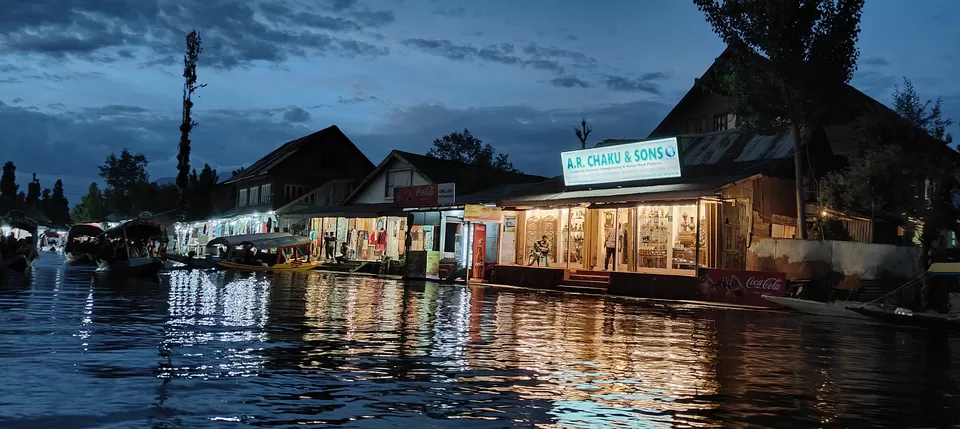

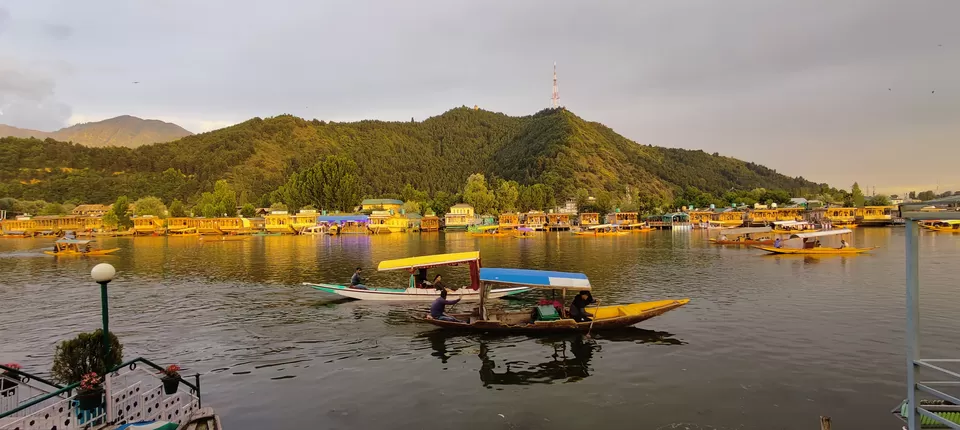

We had our breakfast and checked-out from our house boat and enroute towards Leh.
Traveling through the Zojila Pass is a thrilling and awe-inspiring experience that takes you on a journey through some of the most rugged and breathtaking terrain in the world. Located on the Srinagar-Leh Highway in the Indian state of Jammu and Kashmir, the Zojila Pass is a high mountain pass at an elevation of approximately 11,575 feet (3,528 meters) above sea level. As you approach the Zojila Pass, the scenery becomes increasingly dramatic. You'll find yourself surrounded by towering, snow-capped peaks, vast expanses of rugged terrain, and deep valleys. The visual grandeur of the Himalayan mountains is truly awe-inspiring. The Zojila Pass is known for its challenging road conditions. The pass often remains covered in snow, making it difficult to traverse, particularly during the winter months. The narrow and winding road is carved out of the steep mountainside, and in some places, it's just wide enough for one vehicle. This adds an element of excitement and adventure to the journey. Traveling through the Zojila Pass means ascending to high altitudes. This can be a challenge for travelers who are not acclimatized to such heights. It's essential to be prepared for altitude-related issues and to take it slow to allow your body to adjust to the thin air. The Zojila Pass holds historical significance as it has been a vital trade and transportation route for centuries. It's an integral part of the ancient Silk Road and has played a crucial role in the cultural and economic exchange between India, Central Asia, and Tibet. The rugged, untouched beauty of the Zojila Pass is a photographer's dream. Every twist and turn in the road reveals a new and stunning vista. The juxtaposition of the clear blue sky and the stark mountain landscape creates perfect photo opportunities. Crossing the Zojila Pass is a true adventure. The feeling of being surrounded by towering mountains, traversing narrow, winding roads, and experiencing the sheer scale and raw beauty of the Himalayas is exhilarating. As you descend from the Zojila Pass, you'll enter the beautiful region of Ladakh, home to Leh, a town known for its unique culture and natural wonders. The journey to Leh, after crossing the pass, feels like a reward for overcoming the challenges of the route.





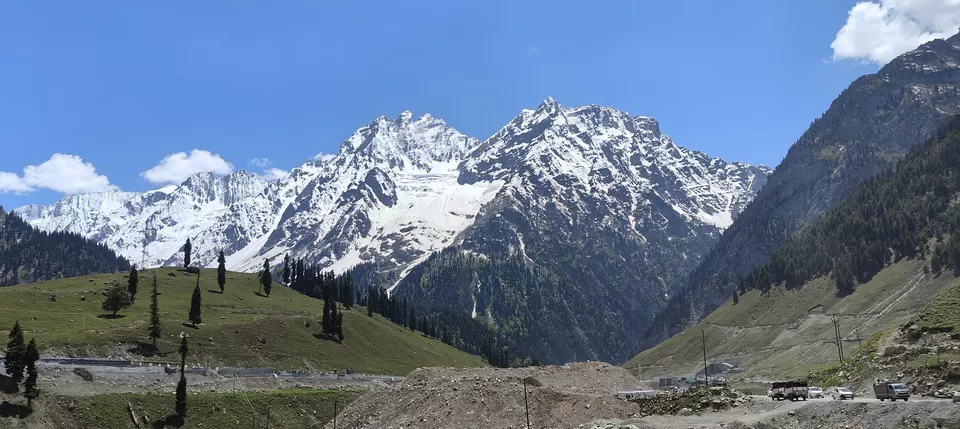
On our way, we stopped at Kargil War Memorial. The Kargil War Memorial, situated in Dras, Jammu and Kashmir, is a solemn and poignant testament to the heroism and sacrifice of the Indian armed forces during the Kargil War in 1999. Visiting this memorial is a moving experience that offers insight into the valor of those who defended their country in the face of extreme adversity. The Kargil War Memorial serves as a heart-rending tribute to the soldiers who fought and laid down their lives in the harsh terrain of the Kargil region. As you approach the memorial, you're immediately struck by a deep sense of respect and gratitude for these brave men. The centerpiece of the memorial is the Wall of Remembrance, which bears the names of all the soldiers who made the ultimate sacrifice in the Kargil War. It's a somber and humbling experience to see the names of these heroes etched in stone, a poignant reminder of the cost of war. The Kargil War Memorial also houses a Martyrs' Gallery, where you can learn more about the soldiers' lives and stories. Photographs, personal memorabilia, and narratives help you connect on a personal level with the individuals behind the names on the wall. The memorial features the Amar Jawan Jyoti, an eternal flame that symbolizes the indomitable spirit and sacrifice of the soldiers. This flame is a source of inspiration and reverence, and it burns continuously in memory of the fallen heroes. The Kargil War Memorial is set against a backdrop of breathtaking natural beauty. The rugged terrain of Dras and the distant peaks of the Himalayas provide a striking contrast to the solemnity of the memorial. The surroundings reflect the harsh conditions under which the soldiers fought and give you an understanding of the challenges they faced. Visitors have the opportunity to pay their respects and offer their gratitude for the soldiers' sacrifices. The memorial evokes a profound sense of patriotism and respect for the armed forces. The Kargil War Memorial also offers insight into the Kargil conflict, its timeline, and the strategic importance of the region. It helps visitors understand the context and the significance of the sacrifices made by the soldiers. Visiting the Kargil War Memorial is a moment of reflection, remembrance, and gratitude. It's an opportunity to comprehend the sacrifices made by the soldiers and the resilience and courage they displayed.


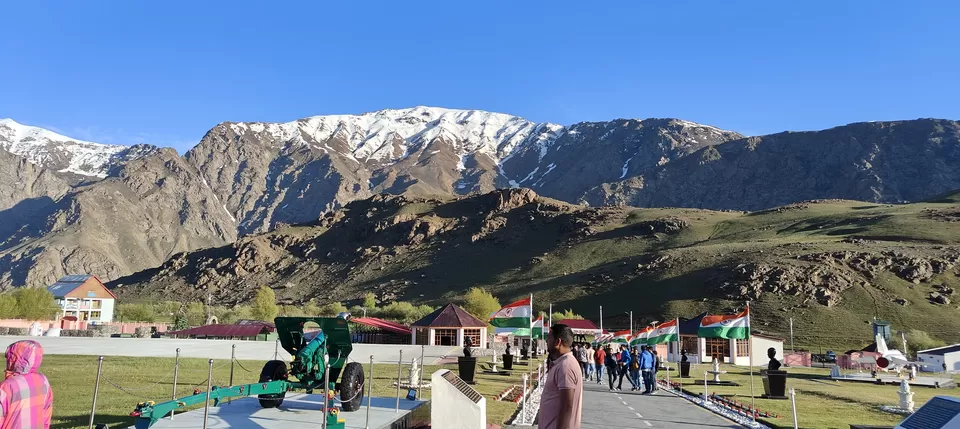









We stayed that night at a pre-booked hotel at Kargil.
We started our day with the enchanting view from our hotel. We left the hotel after having breakfast towards Leh.


Our first stop on our way to Leh was Namikala Pass. Amidst the highway and ragged mountains this pass has a breathtaking view, situated at 12,198 feet above sea level. The surroundings are worth admiration with the serenity of the nature.

We covered a monastery on the way. This region is a hub for different monasteries. It is a place of visit for pilgrims too.

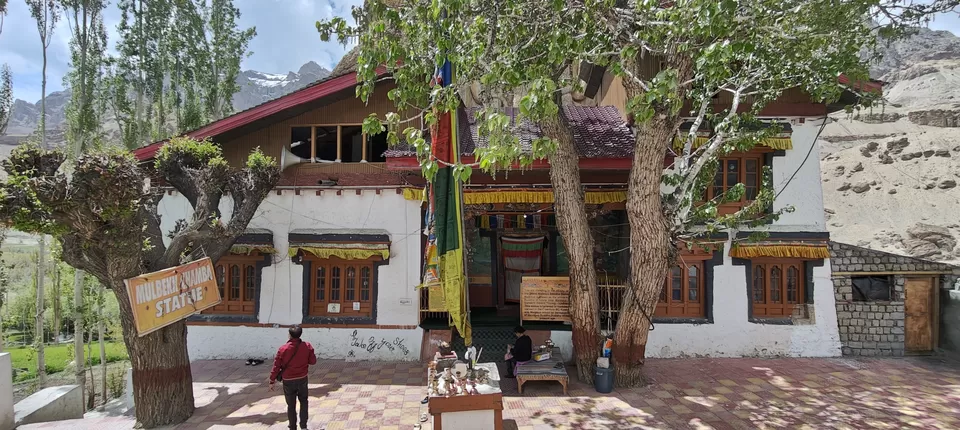
Fotu La, also known as Fatu La, is a high mountain pass located in the Indian union territory of Ladakh. Visiting Fotu La is a breathtaking and exhilarating experience that takes you through some of the most awe-inspiring landscapes in the region. Fotu La sits at an elevation of approximately 13,479 feet (4,108 meters) above sea level. As you approach this mountain pass, you are greeted by a dramatic and majestic landscape. The snow-covered peaks, rocky terrain, and the vastness of the Himalayas provide a stunning backdrop for your journey. The road leading to Fotu La is a thrilling adventure in itself. The high mountain pass features narrow and winding roads that cut through the rugged terrain. As you ascend to higher altitudes, the air gets thinner, and you may find yourself gasping for breath, a reminder of the challenges faced by those who live and work in these high-altitude regions. Traveling to Fotu La means reaching significant altitudes, which can be a test for your body's ability to acclimatize. It's essential to be prepared for altitude-related issues and to take your time to allow your body to adjust to the thin air. Headaches and dizziness are not uncommon, but the views make the discomfort more than worthwhile. The breathtaking scenery at Fotu La is a dream come true for photographers. Every turn in the road offers a new and captivating vista, with opportunities to capture the stark beauty of the mountains and valleys. Whether you're a professional photographer or simply capturing memories, Fotu La is a place where you'll run out of camera memory long before you run out of photo-worthy subjects. Fotu La's beauty lies in its starkness. The rocky terrain, the occasional patches of snow, and the sparse vegetation create a sense of desolation and grandeur simultaneously. The sense of isolation adds to the uniqueness of the experience. Fotu La offers a sense of serenity and tranquility that is hard to find in the hustle and bustle of urban life. The solitude and stillness of the high-altitude terrain provide the perfect environment for relaxation and reflection.

Guru Patthar Sahib Gurudwara, located in the Leh district of Ladakh, is a revered and spiritually significant place that offers a unique and serene experience for visitors. Guru Patthar Sahib Gurudwara holds immense historical and religious importance. It is associated with Guru Nanak Dev Ji, the founder of Sikhism, who is believed to have visited this site during his journey across India. The gurudwara marks the spot where Guru Nanak is said to have meditated, and a large rock with an imprint of his body is preserved within the complex. The gurudwara is nestled in the midst of picturesque landscapes, with the surrounding mountains and valleys providing a sense of peace and serenity. The tranquil environment invites visitors to pause and reflect. Visitors to Guru Patthar Sahib Gurudwara are often greeted with warm hospitality. The gurudwara community provides langar, a communal meal, which is a common practice in Sikh gurudwaras. Sharing a meal with fellow visitors, regardless of their background, is a symbol of unity and equality, especially the Halwa. For Sikh pilgrims and other visitors, Guru Patthar Sahib Gurudwara is a place to connect with their faith and experience a deep sense of spirituality. It's common to find devotees engaged in prayers, meditation, and hymn singing, creating a sacred atmosphere within the gurudwara. The gurudwara complex is a harmonious blend of traditional Sikh architecture and the natural surroundings. The main prayer hall, with its distinctive domed structure, is a place of worship and reflection. The white and golden exterior stands out against the arid, rocky landscape, creating a striking contrast. The views from Guru Patthar Sahib Gurudwara are breathtaking. The Himalayan peaks and the rugged terrain surrounding the gurudwara make it a perfect place for photographers and nature enthusiasts. The pristine beauty of the location adds to the experience of spiritual reflection.

Magnetic Hill, located near Leh in the Ladakh region of India, is a fascinating and somewhat surreal natural phenomenon that offers a unique experience for visitors. The main attraction at Magnetic Hill is the optical illusion that occurs when you park your vehicle at a designated spot on the road. Despite appearing to be on a level road, your vehicle will seem to roll uphill when in neutral. This phenomenon creates the illusion of a magnetic force pulling your vehicle, hence the name "Magnetic Hill." It's a surreal experience that seems to defy the laws of gravity. Magnetic Hill offers stunning panoramic views of the surrounding landscape, including the vast plains of the Indus River Valley and the distant mountains. The barren yet mesmerizing terrain is a stark contrast to the optical illusion that draws visitors here. Local folklore and stories about the Magnetic Hill abound, with some attributing the phenomenon to magnetic fields, while others believe it to be the work of supernatural forces. The area has its share of myths and legends that add an air of mystique to the experience. The stark beauty of the landscape around Magnetic Hill adds to the allure of the place. The vast expanses of Ladakh's high-altitude desert, with its brown and beige hues, are punctuated by the occasional patch of greenery. It's a setting that feels almost otherworldly. Visitors are encouraged to park their vehicles at the designated spot and experience the illusion firsthand. The moment your vehicle seems to defy gravity and start moving uphill is both fascinating and slightly disorienting. Many visitors enjoy taking photos and videos to capture the unique experience. The site is typically equipped with informational boards and signs explaining the scientific reason behind the optical illusion. These signs help demystify the phenomenon and provide visitors with a clearer understanding of what's happening. Near Magnetic Hill, you'll find small cafes and souvenir shops where you can relax, enjoy a cup of tea, and shop for local handicrafts, clothing, and souvenirs. It's a chance to interact with the local community and learn more about their way of life.

We stayed over night at a pre-booked hotel in Leh.
The day started with two-wheeler ride along with our Traveller for Leh sight seeing. On this day, we covered many sight seeing spots like monasteries, Shanti Stupa, Ranchho School, Indus Sangam.
After the sight seeing, we went to the local Leh Market to buy some souvenirs.
We checked out of the hotel after having a heavy breakfast, and started our journey towards Khardungla.
Khardung La Pass, located in the Ladakh region of India, is often referred to as one of the highest motorable passes in the world, offering a thrilling and awe-inspiring experience for travelers. At an elevation of approximately 18,380 feet (5,602 meters) above sea level, Khardung La is one of the highest motorable passes accessible by road. The journey to this lofty height is an adventure in itself, taking you through steep and winding roads that offer breathtaking views of the surrounding mountains. As you ascend to such high altitudes, it's crucial to acclimatize gradually. Travelers may experience symptoms of altitude sickness, such as shortness of breath, headaches, and dizziness. It's essential to take it slow and listen to your body as you reach higher elevations. We were greeted with heavy snowfall on the road and upon reaching the Pass. Once at the pass, you'll be rewarded with panoramic views of the surrounding mountain ranges. The stark beauty of the landscape, with its rugged terrain and snow-capped peaks, is awe-inspiring. It's a photographer's paradise, and every angle offers a postcard-worthy view. At the pass, you'll typically find small tea stalls and souvenir shops. These offer a chance to rest, savor a hot cup of tea, and shop for souvenirs that commemorate your visit to this iconic location. The weather at Khardung La can be unpredictable and challenging. Even during the summer months, you might encounter sudden changes in temperature, high winds, and the possibility of snowfall. It's essential to be prepared for varying weather conditions. Khardung La Pass is often adorned with colorful prayer flags and a stone monument that marks the pass's elevation. The prayer flags add a touch of spirituality to the location and are part of the local Buddhist culture.



After completing the snowy adventure at Khardungla, we headed towards Nubra. On the way, we haulted to go for ATB ride.

Our next stop was Diskit Monastery, located in the Nubra Valley of Ladakh, is a spiritually enriching and culturally fascinating destination that offers a unique experience for travelers. Diskit Monastery is perched on a rocky hill overlooking the Nubra Valley. The panoramic views of the surrounding landscapes, with the Shyok River winding through the valley and the stark mountains in the distance, create a picturesque setting. Upon entering the monastery complex, you'll immediately sense the spiritual ambiance. The sound of Buddhist chants and the fragrance of burning incense fill the air. The peaceful environment invites visitors to pause, reflect, and immerse themselves in the serenity of the surroundings. Diskit Monastery is one of the oldest and largest monasteries in the Nubra Valley. The monastery's architecture and artwork reflect the deep-rooted Buddhist traditions of the region. The centerpiece of Diskit Monastery is a gigantic, 32-meter-tall statue of Maitreya, the future Buddha, which is visible from afar. This towering statue, painted in a serene gold hue, symbolizes hope, compassion, and enlightenment. Around the monastery, you'll find prayer wheels and colorful prayer flags. Spinning the prayer wheels and walking among the flags is a common practice among visitors, and it's believed to spread blessings and goodwill.

Nubra Valley, situated in the northernmost part of Ladakh in India, is a mesmerizing and picturesque destination that offers a unique and memorable experience for travelers. The Nubra Valley is renowned for its breathtaking landscapes. As you enter the valley, you'll be greeted by the dramatic contrast of lush greenery against the backdrop of arid desert mountains. The valley is intersected by the Shyok River, and the surrounding terrains are punctuated by sand dunes, emerald-green fields, and soaring Himalayan peaks. One of the most iconic features of Nubra Valley is the Hunder Sand Dunes. These vast expanses of golden sands are home to double-humped camels. Though riding these gentle giants through the dunes is a memorable experience that feels like a journey through a desert mirage, but we chose not to bother the animals. The valley offers panoramic views of the surrounding mountains. The landscape is an ever-changing canvas of colors and textures, depending on the time of day and season. Yak rides are another unique experience you can enjoy in Nubra Valley. These gentle creatures are used by local shepherds to transport goods, and riding them can be a memorable adventure.


We stayed at a pre-booked tent at Nubra Valley.

Next day morning after having breakfast, we headed towards Thang, the Indo-Pak border.
Visiting the Indo-Pak border at Thang Village, which is situated in the Ladakh region of India, is a unique and emotionally charged experience. The Indo-Pak border at Thang Village represents not only a geopolitical divide but also a symbol of national pride for India. It's a place where the country's sovereignty and the dedication of its armed forces are on full display. The atmosphere at the border is highly charged with patriotism. The location of Thang Village offers breathtaking views of the surrounding Himalayan mountains. The stark beauty of the Ladakhi landscape adds to the solemnity and grandeur of the occasion. The border serves as a dual symbol of both peace and tension. The Indo-Pak border in Thang Village is a historically significant location, given the turbulent history between India and Pakistan. It's a place where the echoes of past conflicts and diplomatic negotiations resonate. One can see the bunkers of both the country by hiring binoculars from the local shop. They will also provide a guide of the panaromic view of the landscape. We also tried some local dishes from the nearby stall.


Our next destination was Turtuk Village, a remote and picturesque hamlet in the Ladakh region of India, offers a unique and enriching experience for travelers. Turtuk offers mesmerizing views of snow-capped peaks and lush valleys. The region's lush green fields, apricot orchards, and terraced landscapes create a striking contrast to the arid, high-altitude desert that Ladakh is known for. Turtuk is one of the northernmost villages in India and was only opened to tourists in 2010. Its remote location has helped preserve its unique culture and traditions, making it an intriguing destination for those seeking an off-the-beaten-path experience. The people of Turtuk are known for their warm and hospitable nature. Turtuk is predominantly inhabited by the Balti community, who have their distinct culture and language. Exploring the customs and traditions of the Balti people, who have roots in Tibet and Central Asia, is a fascinating cultural experience. The village features traditional Ladakhi and Balti architecture with mud-brick homes and intricate woodwork. The ancient village layout is characterized by narrow lanes and alleyways, giving it a timeless feel. Turtuk has small local markets where you can shop for souvenirs, handicrafts, and apricot products, which are a local specialty. You can also explore the village's fresh produce and handmade textiles. Exploring Turtuk on foot is a delightful experience. You can wander through the terraced fields, interact with locals, and take in the stunning views. The village's stunning landscapes, traditional architecture, and vibrant culture make Turtuk a paradise for photographers. Every corner of the village offers a captivating frame.



On our way to the tent, we stopped by the bank of Shyok river, which is intersecting through the Ladakh region and was accompanying us althroughout the journey.
The rest of the night was left for leisure.
The next day we checked out from our tent at Nubra Valley, and headed towards the most awaiting destination - Pangong Tso. On our way, we stopped at Shyok War Memorial.
Shyok War Memorial, located in the Ladakh region of India, is a poignant and solemn destination that pays tribute to the gallant soldiers who made the ultimate sacrifice while serving in the armed forces. Visiting the Shyok War Memorial is a somber and emotionally charged experience. The Shyok War Memorial stands as a tribute to the valiant soldiers of the Indian Army who have lost their lives in the line of duty, particularly in the harsh and challenging terrain of the Ladakh region. It is a testament to their dedication and unwavering commitment to safeguarding the nation. The memorial is situated in a picturesque location, offering breathtaking views of the surrounding Himalayan mountains and the Shyok River. The serene and pristine environment contrasts with the gravity of the memorial's purpose. The memorial is adorned with plaques and inscriptions bearing the names of the brave soldiers who made the supreme sacrifice. As you walk through the memorial, you'll come face to face with the names of these heroes, a powerful reminder of their sacrifice. The memorial maintains a respectful and peaceful ambiance. Visitors are encouraged to pay their respects by observing a moment of silence and reflecting on the sacrifices made by the soldiers. For many visitors, the Shyok War Memorial is an emotional experience. It's a time to remember and honor the courage, commitment, and patriotism of the soldiers who laid down their lives for the nation. The Ladakh region has seen its share of conflicts and geopolitical tensions over the years. The Shyok War Memorial is a reminder of the challenges and sacrifices that come with safeguarding the country's borders. Visiting the memorial is an opportunity to reflect on the idea of national unity and the importance of standing together as a nation, particularly in the face of external challenges. When visiting the Shyok War Memorial, it's essential to maintain a sense of decorum and respect for the solemnity of the place. Follow the rules and guidelines set by the authorities.
Our next destination was the famous and much awaited Pangong Lake, situated in the Ladakh region of India, is a breathtaking and otherworldly destination that provides a truly memorable and awe-inspiring experience. Pangong Lake is renowned for its stunning, ever-changing hues of blue. Surrounded by towering Himalayan mountains and nestled at an altitude of around 14,270 feet (4,350 meters), the lake's crystal-clear waters, fringed by brown and beige hills, create a mesmerizing and surreal landscape. The journey to Pangong Lake takes you through rugged terrain and high mountain passes, adding to the sense of adventure and isolation. Its remote location has helped preserve its pristine beauty and unique character. Please keep in mind, there will be no network in this region. Visiting Pangong Lake involves traveling to high altitudes, so acclimatization is crucial to prevent altitude-related issues. It's essential to take it easy, stay hydrated, and be mindful of your body's response to the thin mountain air. The drive to Pangong Lake offers an ever-changing backdrop of stark mountains, rugged terrain, and small Ladakhi villages. The anticipation builds as you get closer to the lake, and the sight of its mesmerizing waters is nothing short of breathtaking. Pangong Lake gained fame in India after it was featured in the Bollywood movie "3 Idiots", "Jab Tak Hai Jaan" etc. The iconic scene of the lake and its reflections in the crystal-clear water left a lasting impression on Indian and international audiences. Pangong Lake is a photographer's dream come true. Every angle offers a postcard-worthy shot, whether it's the reflections of the mountains on the lake's surface, the pristine shoreline, or the dramatic play of light and shadow. Camping by the lake is a popular option for visitors. The experience of spending the night in tents, with the soothing sounds of lapping water and the starry skies above, is a memory that lingers long after the visit. The tranquility of Pangong Lake is palpable.



We stayed over night at the pre-booked tent.
After having breakfast, we headed towards Leh, leaving Pangong Tso. On our way, we passed through the Chang La Pass.
Chang La Pass, located in the Ladakh region of India, is a high-altitude mountain pass that provides a thrilling and awe-inspiring experience for travelers. Chang La is one of the highest motorable passes in the world, situated at an elevation of approximately 17,590 feet (5,360 meters) above sea level. The journey to this extreme altitude is an adventure in itself, characterized by steep and winding roads. As you ascend to such high altitudes, it's crucial to acclimatize gradually to avoid altitude-related issues. Travelers may experience symptoms like shortness of breath, headaches, and dizziness. Taking it slow and staying hydrated is essential to help your body adjust to the thin mountain air. The drive to Chang La Pass offers spectacular views of the surrounding Himalayan mountain ranges, including the Karakoram and Zanskar ranges. The stark beauty of the landscape, with its rugged terrain and snow-capped peaks, is awe-inspiring and creates a photographer's paradise. Chang La Pass is relatively remote and less crowded compared to some of the other mountain passes in the region. This isolation adds to the sense of serenity and allows you to immerse yourself in the natural beauty of the surroundings. The region around Chang La Pass has strategic importance, and you'll likely encounter a military presence in the area. The Indian Army plays a significant role in safeguarding this border region, and the sight of army personnel and military infrastructure is a testament to the geopolitical significance of the pass. Chang La Pass is often adorned with colorful prayer flags fluttering in the mountain breeze. These prayer flags add a spiritual touch to the surroundings. Along the pass, you'll also find small shelters where travelers can take a break, savor some tea or snacks, and enjoy the panoramic views. The weather at Chang La can be unpredictable, even during the summer months. Visitors might encounter sudden temperature drops, high winds, and the possibility of snowfall. It's essential to be prepared for varying weather conditions. Travelers should be mindful of altitude sickness symptoms and take necessary precautions. Those with severe symptoms may need to descend to lower altitudes. It's advisable to consult with a healthcare professional before making the journey. Chang La Pass is close to the border with China, and it holds geopolitical importance due to its proximity to the Line of Actual Control (LAC). The region has seen its share of military standoffs and tensions between India and China. Reaching Chang La Pass is a personal achievement for many travelers. The sense of accomplishment, combined with the stunning views, creates a memorable and rewarding experience.


After the breathtaking experience, we returned to Leh and checked-in our pre-booked hotel. We also got engaged in shopping spree in the local Leh Market along with some local food. The night was free for leisure.
This was the last day of the trip. We bade good bye to our constant support in the form of our driver, Sonam and boarded to our flight from Leh to Delhi. From Delhi, we got separated and boarded to our respective flights to reach to our respective destination.
This was the end of one of the most memorable trip till date.
Highlights:
1. We were lucky enough to experience heavy snowfall in Khardung La and Chang La Pass
2. In Chang La, we had to wait for the roads to be cleared up by the armies because of the snow
3. We saw rainbow clouds
4. We saw heavy rain on first day at Srinagar
Note:
1. Carry oxygen cylinder which can be hired from Leh
2. Do not carry portable oxygen cans, if you have confidence on your health. We were avid smokers still we did not need any artificial oxygen. Moreover, if you are planning to depart from Leh Airport, all the oxygen cans have to be left behind.
3. Acclimatization is very important, so plan your trip accordingly.
4. Do not panic.
5. Carry Airtel or BSNL postpais SIM Card only, or you can buy it locally.
6. If you are not an avid trekker, a good sneakers or a walking shoe with good grip will be enough for the trip.
7. Carry a puffer jacket, especially for Nubra and Pangong to save yourself from wind blast.










